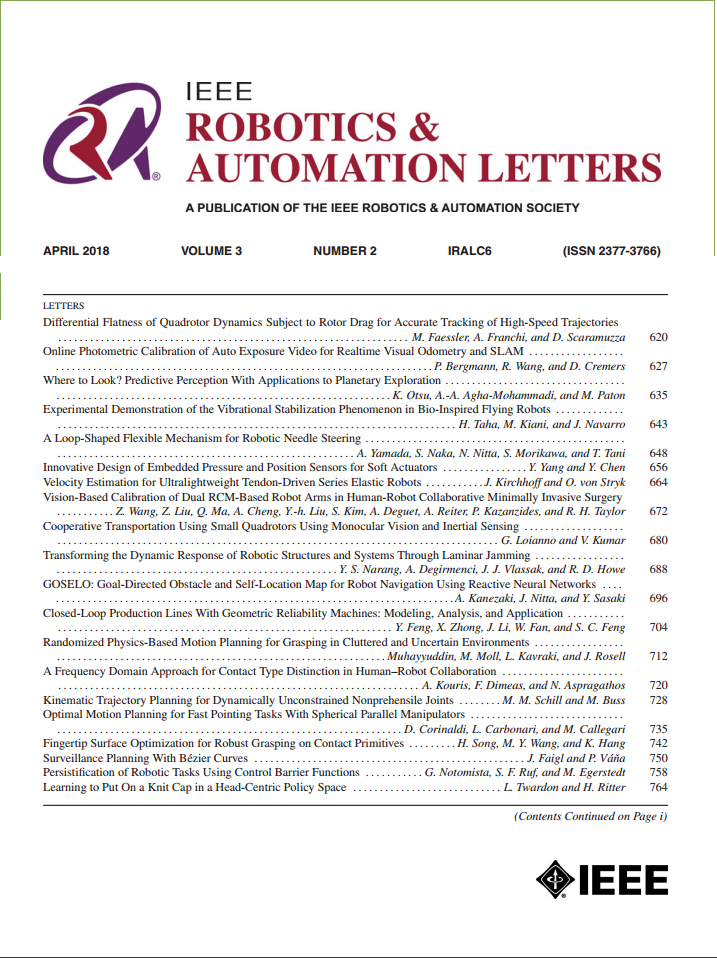基于跨模态融合冲突消除的三维单目标跟踪
IF 4.6
2区 计算机科学
Q2 ROBOTICS
引用次数: 0
摘要
基于点云的三维单目标跟踪是机器人技术和自动驾驶技术的关键挑战。主流的方法依赖于点云在目标模板和搜索区域之间进行几何匹配或运动估计。然而,不完整点云缺乏纹理和稀疏性,使得单峰跟踪器难以区分结构相似的目标。为了克服以往方法的局限性,本文提出了一种跨模态融合冲突消除跟踪器(CCETrack)。激光雷达收集的点云提供了周围环境的精确深度和形状信息,而相机传感器提供了包含丰富语义和纹理信息的RGB图像。CCETrack充分利用这两种模式来跟踪3D对象。具体来说,为了解决由异构传感器引起的跨模态冲突,我们提出了一个全局上下文对齐模块,该模块将RGB图像与点云对齐并生成增强的图像特征。然后,设计了稀疏特征增强模块,利用丰富的图像特征优化体素化点云特征;在特征融合阶段,将两种模态转换为纯电动汽车特征,并分别融合模板和搜索区域特征。采用自关注机制建立区域间的双向通信。我们的方法最大限度地利用了有效信息,并通过多模态互补在KITTI和nuScenes数据集上实现了最先进的性能。本文章由计算机程序翻译,如有差异,请以英文原文为准。
3D Single Object Tracking With Cross-Modal Fusion Conflict Elimination
3D single object tracking based on point clouds is a key challenge in robotics and autonomous driving technology. Mainstream methods rely on point clouds for geometric matching or motion estimation between the target template and the search area. However, the lack of texture and the sparsity of incomplete point clouds make it difficult for unimodal trackers to distinguish objects with similar structures. To overcome the limitations of previous methods, this letter proposes a cross-modal fusion conflict elimination tracker (CCETrack). The point clouds collected by LiDAR provide accurate depth and shape information about the surrounding environment, while the camera sensor provides RGB images containing rich semantic and texture information. CCETrack fully leverages both modalities to track 3D objects. Specifically, to address cross-modal conflicts caused by heterogeneous sensors, we propose a global context alignment module that aligns RGB images with point clouds and generates enhanced image features. Then, a sparse feature enhancement module is designed to optimize voxelized point cloud features using the rich image features. In the feature fusion stage, both modalities are converted into BEV features, with the template and search area features fused separately. A self-attention mechanism is employed to establish bidirectional communication between regions. Our method maximizes the use of effective information and achieves state-of-the-art performance on the KITTI and nuScenes datasets through multimodal complementarity.
求助全文
通过发布文献求助,成功后即可免费获取论文全文。
去求助
来源期刊

IEEE Robotics and Automation Letters
Computer Science-Computer Science Applications
CiteScore
9.60
自引率
15.40%
发文量
1428
期刊介绍:
The scope of this journal is to publish peer-reviewed articles that provide a timely and concise account of innovative research ideas and application results, reporting significant theoretical findings and application case studies in areas of robotics and automation.
 求助内容:
求助内容: 应助结果提醒方式:
应助结果提醒方式:


